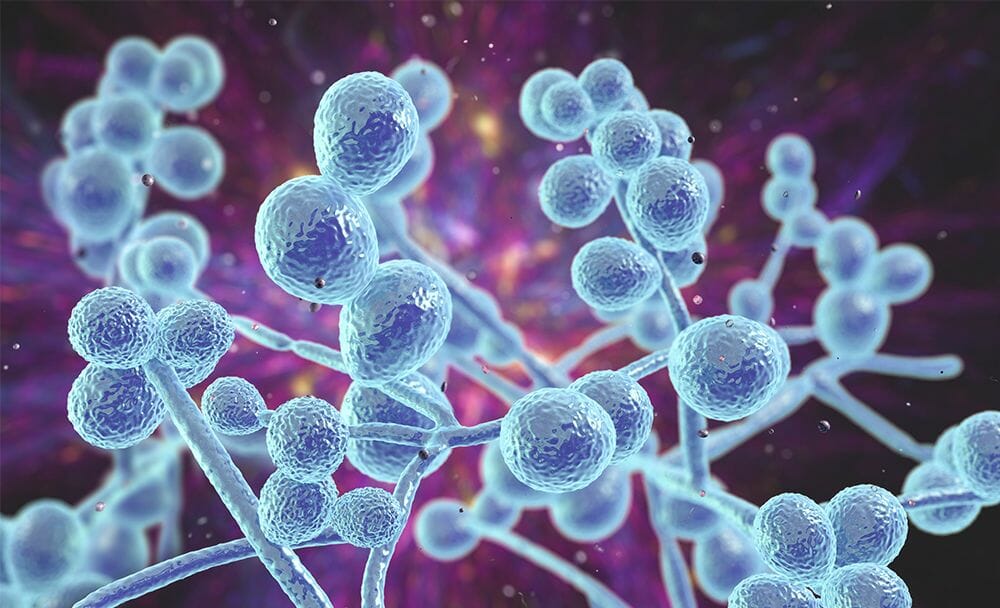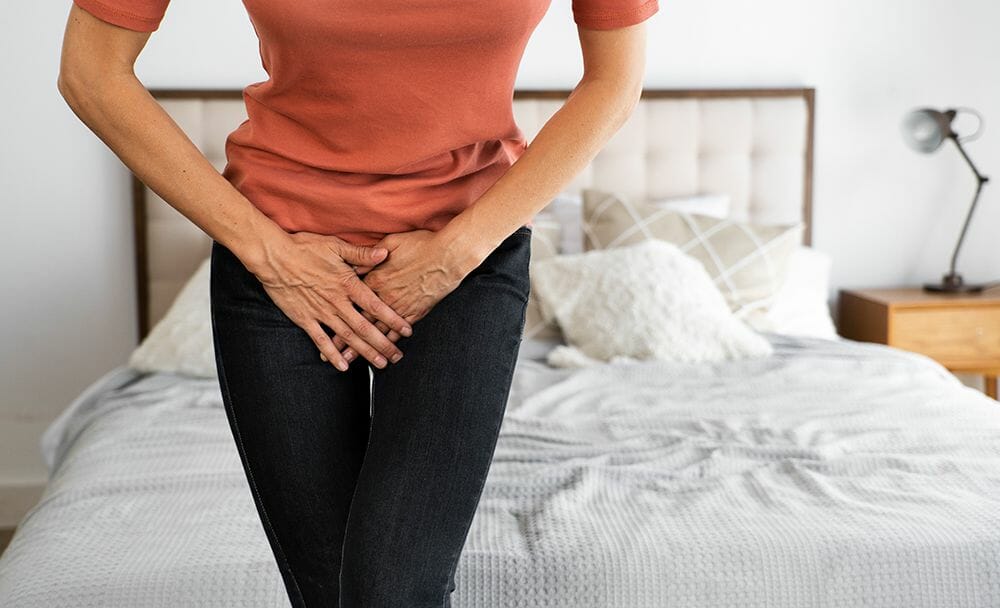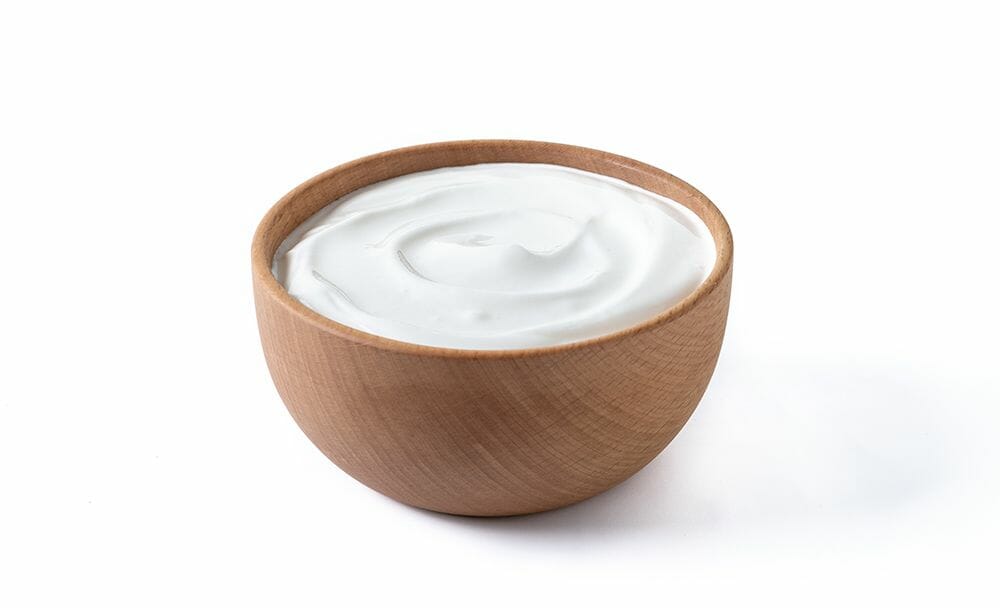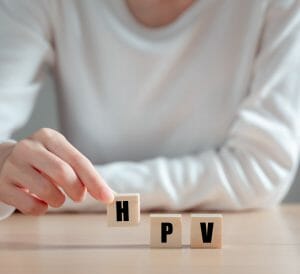
Yeast infection, or candidiasis, is a quite common fungal infection affecting various body parts. It is the result of an overgrowth of a type of fungus called Candida, most commonly Candida albicans. When the fungi attack the body, it makes its way through to the bloodstream and then spreads everywhere inside it is called deep Candidiasis. [3] This can also be associated with the symptoms of Kaphaja yoni vyapat in Ayurveda, where there is an increase in Kapha dosha throughout the body. The management of this condition involves using dry, pungent, and hot substances (Ruksha, Katu, Ushna dravyas). Local treatments such as Yoni Prakshalana (douching), Yoni Pichu (tamponing per vagina), Yoni Varti (use of pessaries), and Yoni Dhoopana (fumigation) have been described, and these methods have shown effectiveness in treating Kaphaja Yoni Vyapat. [5]
Treatment methodologies are different for each case, and natural prevention is critical in order to keep oneself safe from the disease and for the prevention of sepsis. [3] The infection can occur in both men and women and can affect various areas, including the mouth, genital regions, skin, and nails. [1]
This comprehensive article will delve into what is a yeast infection, the yeast infection causes, symptoms, diagnosis, and treatment options.
Causes of Vaginal Yeast Infections
Yeast infection is primarily caused by an overgrowth of Candida, a fungus that naturally resides in our bodies. Under normal circumstances, the balance of microorganisms in the body keeps Candida in check. However, certain factors can disrupt this balance, triggering an overgrowth of the fungus and causing an infection. Common causes include:
Antibiotics:
Antibiotics can kill both harmful and beneficial bacteria in the body. The reduction of beneficial bacteria can lead to an overgrowth of yeast, causing a yeast infection. This is a common reason why women may experience yeast infections (vaginal) after taking antibiotics.
Weakened Immune System:
Individuals with compromised immune systems, such as those with HIV/AIDS, cancer, or autoimmune diseases, are more susceptible to yeast infections.
Uncontrolled Diabetes:
High blood sugar levels can promote yeast overgrowth, especially in moist areas like the mouth and genital regions.
Pregnancy:
Hormonal changes during pregnancy can alter the vaginal environment, increasing the risk of vaginal yeast infections.
Contraceptives:
Some contraceptive methods, such as intrauterine devices (IUDs) and spermicides, can be one of the yeast infection causes. [3]
Having sex with an infected person:
In certain cases, women can acquire the infection from someone else if a substantial amount of yeast enters the vagina from external sources. For example, this can happen through sexual contact with a man who has a yeast infection on the head (glans) of his penis. [4]
Hygiene issues, stress, wearing tight-fitting clothes:
Stress, using soap to wash the genital area, wearing tight and synthetic clothing, sweating, and using “non-breathable” panty liners or sanitary pads. These conditions create a congenial environment where yeast can thrive, leading to inflammation. [4]
Other Factors:
Other factors that can make individuals more susceptible to candidiasis include conditions like tuberculosis (TB), myxedema, hypoparathyroidism, Addison’s disease, and nutritional deficiencies in vitamins A, B6, and iron. Predisposing factors also include smoking, wearing poorly maintained dentures, having intravenous (IV) tubes or catheters, heart valve issues, infancy, and advanced age, among others. Xerostomia, a condition characterized by dry mouth, can also increase the risk of candidiasis due to the absence of protective antifungal proteins like histatin and calprotectin. [3]
Symptoms of Vaginal Yeast Infections
Yeast infection symptoms vary depending on the affected area:
Vaginal Yeast Infection symptoms:

- Itching, discomfort, and irritation in the vagina and vulva
- Abnormal vaginal discharge that is thick, white, and resembles cottage cheese
- Redness and swelling in the vaginal area.
- Burning sensation during urination
Penile Yeast Infection:
- Red, itchy rash on the penis.
- Swelling and soreness of the foreskin or head of the penis. [3]
Diagnosis of Yeast Infections
If a yeast infection is suspected, it is essential to seek medical evaluation for proper diagnosis. A healthcare provider will typically perform the following:
Direct Physical Examination:
The doctor will examine the affected area and look for visible signs of a yeast infection, such as redness, swelling, or yeast infection discharge.
Microscopic Examination:
For vaginal yeast infections, a sample of vaginal yeast infection discharge may be taken by scraping or swabbing and examined under a microscope to identify the presence of yeast cells.
Serological Methods:
The frequently utilized serological techniques comprise agar gel diffusion (AGD), counter immunoelectrophoresis (CEP), whole cell agglutination (AGGL), latex agglutination (LAT), indirect fluorescent antibody, and complement fixation. Among these, the most commonly employed tests are AGGL, AGD, and CEP.
Culture Test:
In some cases, a culture may be done by rubbing of the sterile swab on the area that is infected to identify the specific type of yeast causing the infection. This helps in guiding appropriate treatment. [2]
Blood Tests:
If a systemic yeast infection is suspected, blood tests may be conducted to check for the presence of Candida in the bloodstream. [3]
Treatment of Yeast Infections
Yeast infection treatment depends on various factors such as the location of the infection, the patient’s immune status, risk factors for infection, the specific Candida species responsible, and the susceptibility of that species to the antifungal medication. [2]
Yeast infection medication:
The most common treatment for yeast infections is antifungal yeast infection medicine. These can be topical creams, ointments, suppositories, or oral tablets. They work by killing the Candida fungus or inhibiting its growth. Common vaginal yeast infection antifungal medications include clotrimazole and nystatin, and for severe cases, fluconazole may be prescribed. [1]
Lifestyle Changes:
Making vital lifestyle changes can help prevent and manage yeast infections. These may include maintaining good hygiene, wearing loose-fitting clothing, avoiding douching, and practicing safe sex. [4]
Yogurt:

Common home remedies for yeast infection medication include applying plain, unsweetened yogurt to the affected area. Yogurt contains beneficial bacteria that can help restore the natural balance of microorganisms. [4]
Vaginal wash:
The use of Panchavalkala Arka for vaginal wash is an effective vaginal yeast infection treatment option. It includes proper tissue cleansing, oxygenation, restoration of disrupted anatomical and physiological functions, and pH level regulation of the vaginal flora.
Panchavalkala arka is a colorless and odorless liquid composed of five Ksheerivruksha (Vata, Udumbara, Plaksha, Pareesha, and Ashwatha) without the addition of any other chemicals. These ingredients possess a combination of pungent and bitter taste (Katu, Tiktakashaya rasa), light and dry sharp qualities (Laghu, Ruksha, Teekshna guna), and a hot potency (Ushnaveerya) with a pungent after-digestion (Katuvipaka). The properties of Panchavalkala arka include promoting healing of wounds (vranashodana), wound healing (Ropana), alleviating vaginal disorders (Yonidoshahara), and relieving itching (Kandugna). [5]
FAQs
How can a yeast infection be prevented?
Preventing yeast infections involves adopting healthy habits and minimizing risk factors. Here are some tips to reduce the likelihood of developing a yeast infection:
Practice Good Hygiene: Keep the genital area clean and dry, especially after swimming or exercising. Avoid using strong soaps or douching, as they can disrupt the natural balance of microorganisms.
Wear Breathable Fabrics: Choose underwear and clothing made from natural fabrics like cotton to allow air circulation and reduce moisture buildup.
Avoid Tight Clothing: Avoid wearing tight-fitting clothes, especially for extended periods, as they can trap moisture and promote yeast growth.
Limit Antibiotic Use: Use antibiotics only as prescribed by a healthcare professional and avoid unnecessary or prolonged use.
Manage Diabetes: If you are a patient of diabetes, discuss with your healthcare provider to manage your blood glucose levels effectively.
Practice Safe Sex: Make use of condoms during intercourse to lower the risk of transmission of yeast infections.
How will you know whether you have a yeast infection?
A vaginal yeast infection can be recognized by several distinct indicators. These symptoms may consist of an itchy or burning sensation in the vagina and vulva, as well as a thick, white vaginal yeast infection discharge resembling the texture of cottage cheese.
Is yeast infection a serious condition?
A vaginal yeast infection is not considered a severe condition and can be effectively treated with medications. Nevertheless, it could be indicative of an underlying, more critical issue or may lead to severe complications, particularly if not addressed promptly.
Conclusion
Yeast infection is a common fungal infection caused by the overgrowth of a type of fungus present in the body. While most yeast infections are not that serious, they can cause discomfort and inconvenience. Prompt diagnosis and appropriate yeast infection treatment, such as antifungal medications, can effectively resolve these infections. Adopting healthy habits and preventive measures can also help reduce the risk of recurrent yeast infections and maintain overall well-being.
Disclaimer:
This article is written from a health and wellness perspective only and is not a piece of medical advice. Kindly seek the help of a certified medical practitioner before initiating any treatment.
References:
- An Overview to Candidiasis – A Candida Infection
- Candidiasis: A Fungal Infection- Current Challenges and Progress in Prevention and Treatment
- Candidiasis
- Vaginal yeast infection (thrush): Overview
- An International Journal of Research in AYUSH and Allied Systems MANAGEMENT OF KAPHAJA YONI VYAPAT BY PANCHAVALKALA ARKA W.S.R TO VUVLOVAGINAL CANDIDIASIS-A CASE REPORT






















